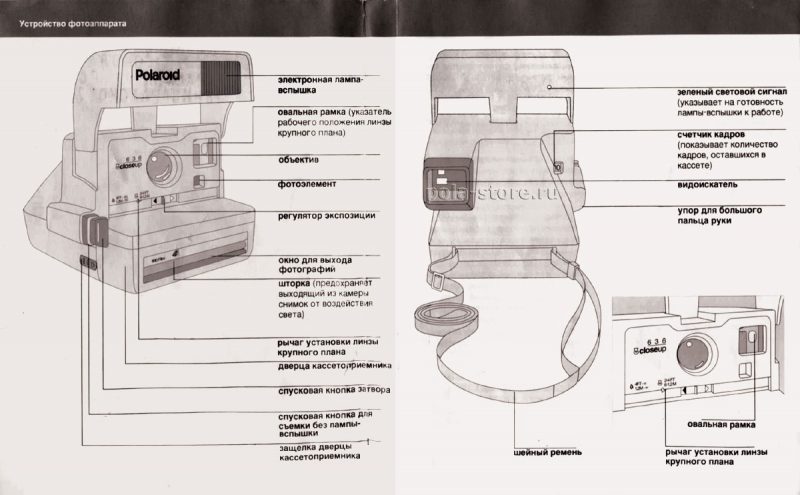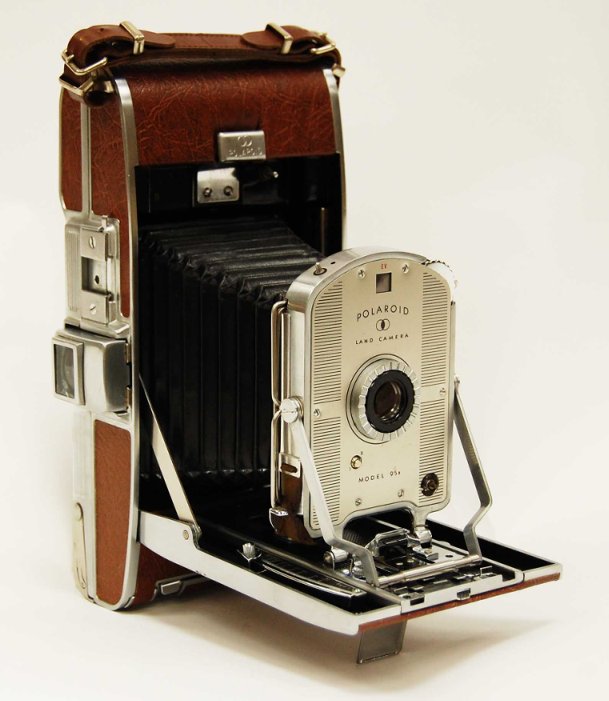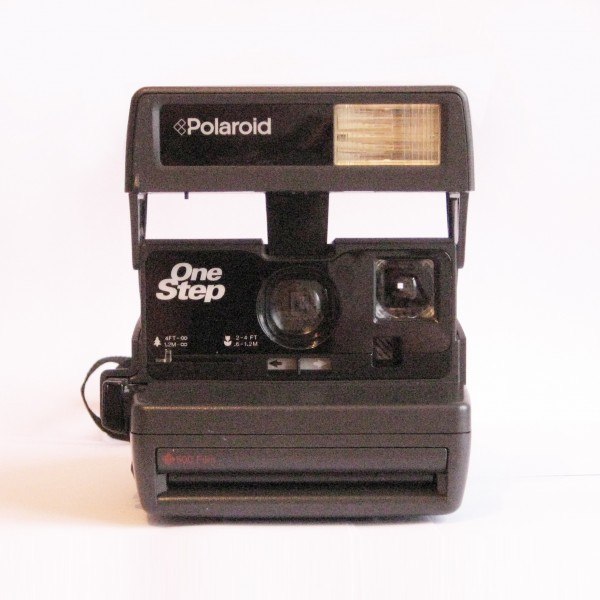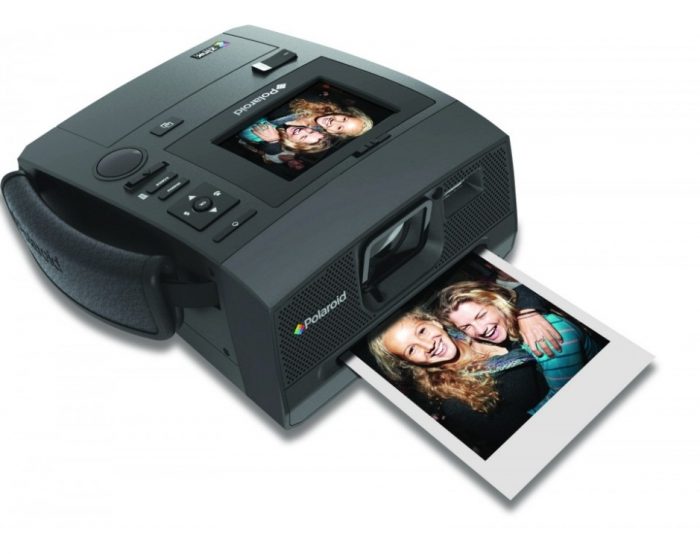Today, the polaroid camera is familiar to almost everyone. The ability to take high-quality pictures and at the same time get the coveted photo card attracts millions of people. However, the polaroids were once at the peak of popularity - the history of the company of the same name engaged in the production of these cameras has many ups and downs. About them, as well as about the device and the basic principles of such a camera, we will discuss below.
Operating principle
The development time of the snapshot takes about a minute and a half. After pulling the trigger, the process of irradiation of the photosensitive material occurs, then the card passes through the roller mechanism, where the alkali solution reacts with its upper layers, and the process of developing the photograph begins.
Photosensitive material consists of a dozen layers: protective, sensitive and so on. For such a principle of operation of the device, developers have been going for many years.

Polaroid Camera Device
It is impossible to remake a polaroid image, since it is created as a unique photo. In view of these features, there are a number of rules for using such a technique.
To make a high-quality photo, you need to understand how such a camera works and learn the basic laws of photography. For example, if the received image turned out to be yellow and there are highlights on it, this means that the photographer did not remove the card in the dark for full manifestation. After the photo is printed, it must immediately be placed in places without light for a couple of minutes to consolidate the result. For these purposes, even a jacket pocket or women's handbag is suitable.

Polaroid Instant Camera and the picture taken with it
Until the picture is printed completely, it is strictly forbidden to touch the photo, otherwise you can spoil the picture and make the image blurry. The photograph will take its final form after one day after the shutter clicks. If stripes appeared on the photo, then you can not worry - after this time they will disappear from the image. You should also not shoot against a background of bright light, so as not to get overexposed areas in the picture.
In the opposite cases, when the image is too dark, the reason lies in the lack of lighting. Some models of polaroids provide a flash function, but if it is not there, then you just need to choose a place with sufficient lighting and repeat the picture.
You should not get close to the subject, as this may result in a blurred image. Modern polaroid cassettes are not perfect and can carry unsharp frames.

Bad shot taken with a Polaroid camera. There are highlights and blurry areas
The undesirable “smudge” effect is shown in the upper and lower parts of the photo and brings a lot of disappointment to the owner of the camera. However, as photography enthusiasts admit, this is quite normal. You just need to place the photographed objects in the center of the frame and then an unpleasant failure will not spoil the picture, but only add interesting details.
After each photo session using this camera, it is advised to clean the mechanisms through which the frame passes during printing. This will reduce the number of failed shots. Cartridges should be protected from sunlight and stored in a cool room.

Cartridges for instant printing
The ups and downs of Polaroid
The polaroid camera was in frantic demand in the eighties and nineties. Such a camera was in almost every home. However, the love of snapshots faded when cameras appeared that let you take digital photos. They replaced the polaroid and for many years removed it to the far shelf.
Modern devices, developed on the basis of innovative technologies, are significantly different from their predecessors, satisfying the needs of today.
The American company Polaroid is engaged in the production of electrical equipment, glasses and, of course, cameras. Brad was created by Edwin Land in 1937 and began his active work on the development and production of various inventions. Land was a true genius and in his life gave the world more than five hundred innovative inventions. In addition to active scientific activity, Edwin had an excellent business acumen and for four decades skillfully managed his company.

Edwin Land, scientist and creator of Polaroid
They say that the idea of creating a camera that will give people the opportunity to immediately print their pictures came to his daughter's head. The girl contributed to the creation of this miracle by once asking dad why it is impossible to get a picture after clicking the camera. Land really liked this idea, and his company took up the development of such a camera. In 1948, the first polaroid appeared, perfectly coping with its function.
The cost of the photo was one dollar, which was quite expensive for ordinary families. The high price of the pictures was explained by the high cost of making cartridges for such a technique. However, even this could not affect the desire of Americans to purchase a camera with instant printing of pictures, and the fame of the polaroids scattered throughout America.

One of the first instant print camera models
The production technology of that time was significantly different from the modern one. In 1972, the company released an improved model of the camera, which allowed you to take pictures in color and did not burden its owner with the need to precisely point the camera. From that moment, the varieties of the camera became directly proportional to their cost - the Polaroid company produced more and more different models, and their prices became lower. This allowed us to make such a technique truly a people's favorite.
The glory of the instant printing camera went beyond the borders of the country, and production gradually gained worldwide proportions. Soviet citizens were delighted with the latest in the world of photography. In place of old, inaccessible materials and difficult to manage cameras, the pictures of which had to be shown in special dark rooms and dozens of difficult manipulations, came the camera, allowing anyone who wants to instantly receive the coveted photo. The polaroid with its rather affordable cost was accessible to the majority of the population and instantly flew from the shelves.

A common model of camera in the USSR
It is worth noting that, despite the low price of the device itself, the cassettes for it were quite expensive - about twenty pieces cost as much as a whole camera and were intended for single use. Another drawback was the quality of the pictures, because group photos completely excluded the opportunity to consider the face of each separately due to the small size of the photo.
The ability to make changes or edit such a frame was also excluded, which did not please the photographers. Over time, another minus appeared in the use of such cameras - after a couple of years, the pictures began to darken or lose color when exposed to sunlight.
Despite these shortcomings, cameras fell in love and gained wide popularity. However, here the creator of the company made a fatal mistake - in the eighties at the dawn of the advent of digital technology, Land abandoned the idea of its release.In the mid-nineties, the company still released its first digital camera, but it was significantly late and was superseded by competitors in the photographic market. This led to bankruptcy and in 2001 the company began to have serious financial problems.
For about 10 years, Polaroid cameras have not appeared on sale. Nevertheless, in 2011 a new model range of cameras was released. The management of the bankrupt company set a goal to revive the popularity of snapshots and introduced a new series of cameras.
Retro Polaroid models and their modern counterparts
Polaroid retro models have long been discontinued, but rare models can still be found on the market, however, the price of such devices is no different from new models. In the entire history of the company, there are 4 main line of cameras:
- The Land Series is the very first instant printing device. The average time of the film development process is from 20 seconds to 1 minute. The internal device of the camera allows you to create a collage - take several photos in one picture. Printed pictures had to be removed from the camera manually. Despite the fact that the main emphasis was placed on what it intended for snapshots, the company's engineers did not forget about the quality of the image: the camera has good color reproduction for that time.
- SX-70 series - here, manufacturers have made a big step forward to ensure high quality images. The camera allows you to take macro shots at record close distances - 30–50 cm. Some models have a built-in auto focus function. The main disadvantage of this model was the long development time, which for black and white cards was 7 minutes, and color - more than half an hour.
- 600 series - these cameras have the ability to manually adjust the brightness and contrast of the future picture. The design of the camera provides an internal flash, which allows you to take pictures in conditions of complete absence of lighting. Some models of this series can be disassembled, which ensures its convenient transportation.
- Widescreen - here the size of the photo card increases and reaches 10 * 12 cm. This is due to the built-in wide-angle lens that can cover a large space. Some models have a digital screen. The full functionality of the camera has expanded significantly compared to previous models: now the user can independently adjust the brightness, autofocus, flash and even set a timer.

600 Series Retro Model Instant Print Camera
Already in 2010, the Polaroid company was rebranding and pushing the infamous singer Lady Gaga to the position of creative director. A year after such changes, a new line of cameras appears. The new design is no different from the old one, but its weight has significantly decreased. The only thing that the creators added to previous models is the ability to control the camera via a smartphone.
In today's market you can find the following models:
- Polaroid PoGo - the camera in appearance resembles the famous GoPro series and is a compact rectangle. The internal device is equipped with access to any smartphone. This allows you to save pictures in the memory of a mobile phone. The device weighs 230 grams and fits easily into your hand.
- Polaroid 300 - has a rounded shape and compact body, made in 4 colors: classic black, purple, blue and red. This model is ideal for everyday shooting. The built-in flash provides high-quality images even in dark rooms or at night. For convenience, 4 shooting modes are developed.
- The Polaroid Z340 is the first digital camera to print photos instantly. The camera has a built-in image editing function with standard settings. You can also create several copies of the same picture at once, setting the required number in the settings. The printing process is 50 seconds.

Modern Polaroid 300
How much does a Polaroid camera cost?
The price of instant printing cameras varies from 2000 to 6000 rubles. Cartridges for such cameras cost from 1000 rubles. The most common model is the Polaroid Snap, which is a 10-megapixel camera with an integrated print system. The size of the photograph is 7.6 * 5 cm. Its weight is slightly less than 500 grams, which allows girls to use it with maximum comfort. In addition to printing a picture, the camera saves the image in digital format.

Polaroid camera while printing a picture
The company, whose history consists of ups and downs, is again gaining momentum. The idea of creating a snapshot is striking in its uniqueness, which allows it to sweep through the centuries. Modern Polaroid cameras allow you to not only instantly receive an image, but also save it to third-party media.
